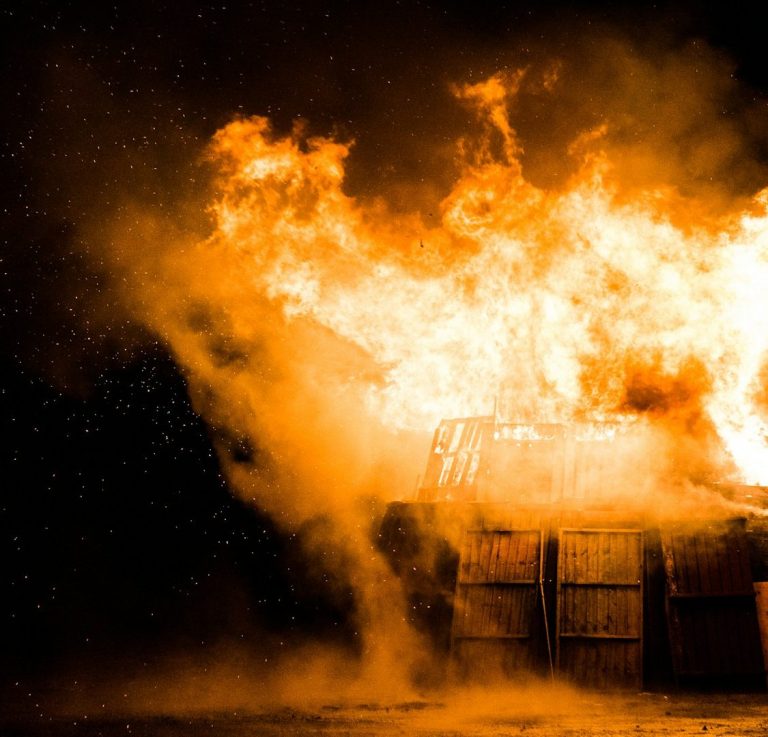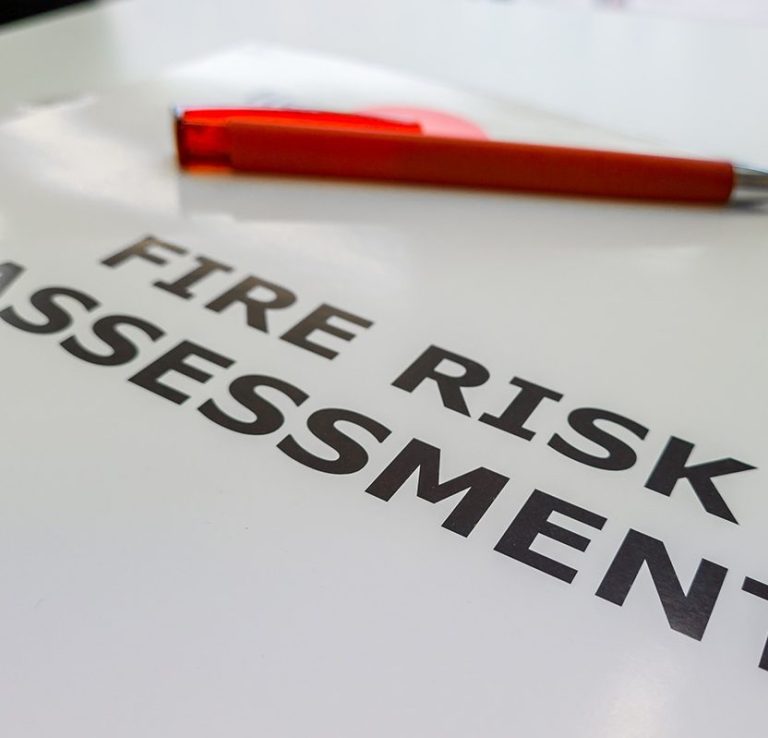Fire Safety Services & Training
We offer a comprehensive range of fire safety services designed to help your organisation stay compliant, prepared, and safe.
Our core services include:
Fire Risk Assessments
Thorough, compliant assessments to identify fire hazards, evaluate risks, and provide clear, actionable recommendations.
Fire Safety Awareness Training
Essential training for all staff, covering fire prevention, evacuation procedures, and safe behaviour during an emergency.
Fire Marshal / Warden Training
In-depth training for designated fire wardens or marshals, focusing on roles and responsibilities, evacuation coordination, and incident management.
Fire Safety for Responsible Persons Training
Tailored for those legally accountable under fire safety legislation, covering compliance duties and risk management.
Interactive & Practical Learning
All training is highly interactive, ensuring engagement and retention. Practical fire extinguisher sessions can be added on request, giving participants hands-on experience in using the correct equipment safely.
Get in touch to learn how we can help your organisation meet its fire safety responsibilities with confidence.

Fire Risk Assessments
At SP Training Solutions Ltd, we offer professional Fire Risk Assessments to help your business meet its legal obligations and maintain a safe environment for staff, customers, and visitors.
Why Fire Risk Assessments Matter:
Under the Regulatory Reform (Fire Safety) Order 2005, all UK businesses and non-domestic premises are required by law to carry out a suitable and sufficient Fire Risk Assessment. This vital process identifies fire hazards, evaluates the risk to people, and ensures that adequate fire safety measures are in place.
Failing to carry out a Fire Risk Assessment can result in enforcement action, fines, or even prosecution in the event of an incident.
Our Fire Risk Assessment Service Includes:
A comprehensive inspection of your premises by an assessor
Identification of fire hazards and people at risk
Evaluation of current fire safety measures and recommendations for improvement
A detailed, easy-to-understand written report with prioritised actions
Guidance on fire prevention, evacuation planning, and legal compliance
Who Needs a Fire Risk Assessment?
Fire Risk Assessments are a legal requirement for:
Offices and shops
Factories and warehouses
Healthcare premises
Educational institutions
Hospitality and leisure venues
Residential buildings with shared areas
Essentially, if you are responsible for a workplace or non-domestic building, you must ensure a Fire Risk Assessment is in place and regularly reviewed.
Why Choose SP Training Solutions Ltd?
Experienced Assessors: Our team has the knowledge and expertise to identify risks and offer practical, cost-effective solutions.
Fully Compliant Reports: We provide clear, actionable documentation aligned with current legislation.
Tailored Service: Every assessment is specific to your premises and operations.
Peace of Mind: We help you create a safer environment while ensuring you meet your legal duties.

Fire Safety Awareness Training
Course Overview:
The Fire Safety Awareness Training delivered by SP Training Solutions is an engaging and interactive session designed for all staff within the practice. This course provides essential knowledge on fire prevention, the causes and spread of fire, human behaviour during emergencies, and effective evacuation procedures. Participants will gain a clear understanding of the fire safety features within their building and learn how to identify and reduce potential risks. The session encourages active participation and discussion, with an optional practical component on the safe use of fire extinguishers, ensuring attendees leave more confident and prepared in the event of a fire.
Suitability: Suitable for all staff within an organisation.
Course Objectives:
By the end of this training, participants will:
- Understand the nature and behaviour of fire and its risks in the workplace.
- Recognize how human behavior affects fire safety and evacuation.
- Be familiar with their building’s fire safety features and evacuation procedures.
- Learn how to prevent fires through risk assessment and good practices.
- Gain confidence in the use of fire extinguishers (optional hands-on session)
Course Outline:
1. Introduction to Fire Safety
Importance of fire safety in the workplace
Overview of legal responsibilities
2. Understanding Fire: Causes and Spread
The fire triangle and common ignition sources
How fires develop and spread
Compartmentation and control strategies
3. Human Behaviour in Fire Situations
How individuals and groups typically respond in emergencies
Recognising barriers to effective evacuation
Strategies for managing people and maintaining calm
4. Fire Evacuation Procedures
Step-by-step guide to your practice’s evacuation plan
Roles and responsibilities (Fire Marhsals/Wardens, staff, visitors)
Assembly points and roll call procedures
5. Fire Precautionary Features of Your Building
Location and function of fire doors, alarms, detectors
Emergency lighting and signage
Safe routes and refuge areas
6. Fire Prevention and Risk Assessment
Identifying potential fire hazards
Good housekeeping and safe storage
Conducting and reviewing a fire risk assessment
Reporting concerns and maintaining fire logs
7. Fire Extinguishers (Optional Practical Session)
Types of fire extinguishers and their uses (water, CO₂, foam, powder)
Colour coding and identification
Practical demonstration and hands-on practice (where permitted and feasible)
Duration: 2 hours
Certification: A certificate of attendance is provided to each attendee that completes the training


Fire Marshal / Warden Training
Course Overview:
The terms Fire Marshal and Fire Warden are interchangeable and mean the same thing.
Suitability:
This interactive and engaging Fire Marshal / Fire Warden Training is designed to provide appointed staff with the knowledge, confidence, and practical skills needed to fulfil their fire safety responsibilities effectively. Delivered in a dynamic, engaging format, the session combines essential theory with real-world scenarios to ensure participants are prepared for their role in fire prevention, evacuation, and emergency response. Attendees will explore legal duties, fire behaviour, human reactions, and building safety features in a way that encourages participation and retention. The training also includes an optional hands-on fire extinguisher session for practical experience.
Course Objectives:
- By the end of the training, participants will:
- Understand the legal responsibilities and duties of a Fire Marshal / Fire Warden.
- Recognize how human behaviour affects fire safety and evacuation efficiency.
- Learn to identify fire risks and contribute to ongoing fire prevention.
- Understand how fires start, spread, and can be controlled.
- Gain detailed knowledge of the building’s fire precautionary systems.
- Confidently support and manage evacuation procedures during an incident.
- (Optional) Practice using fire extinguishers in a safe, supervised setting.
Course Outline:
1. Introduction to the Fire Marshal Role
Overview of key duties and expectations
The Fire Marshal’s role before, during, and after an incident
Encouraging a safety culture in the workplace
2. Legal Requirements
Understanding the Regulatory Reform (Fire Safety) Order 2005
Legal responsibilities of employers and designated staff
Compliance, enforcement, and consequences
3. Human Behaviour in Fire Emergencies
How individuals and groups typically respond in emergencies
Recognising barriers to effective evacuation
Strategies for managing people and maintaining calm
4. Evacuation Procedures
Reviewing and understanding your evacuation plan
Fire Marshal responsibilities during evacuation
Assisting vulnerable persons and coordinating at assembly points
Post-incident reporting and debrief
5. Causes and Spread of Fire
The fire triangle and common ignition sources
How fires develop and spread
Compartmentation and control strategies
6. Fire Precautionary Features of Your Building
Fire detection, alarm systems, emergency lighting
Fire doors and escape route management
Understanding your specific workplace layout and safety features
7. Fire Prevention and Risk Assessment
Proactively identifying and mitigating fire hazards
Contributing to or supporting fire risk assessments
Housekeeping, electrical safety, and storage best practices
8. Fire Extinguishers – Practical Session (Optional)
Types of extinguishers and their uses
Colour coding and suitability for different fire classes
Safe handling and discharge in a controlled environment
Duration: 3 hours
Certification: A certificate of attendance is provided to each attendee that completes the training


Fire Safety for Responsible Persons Training
Suitability:
Staff identified as a Responsible Person under the Regulatory Reform (Fire Safety) Order 2005, including Project Managers, Housing Officers, Estate Management Officers, Fire Risk Assessors, and Strategically Responsible Persons.
Course Overview:
This interactive workshop is designed for staff who hold responsibility for fire safety management under the Regulatory Reform (Fire Safety) Order 2005. It provides participants with the essential knowledge to understand and apply the core principles of fire safety governance and day-to-day fire risk management. The session combines legal context with practical application, focusing on the duties of a Locally Responsible Person and preparing Strategically Responsible Persons to step into the role if required. Through discussion, case examples, and group activities, participants will develop confidence in preventing, managing, and responding to fire risks in their working environment.
Course Objectives:
By the end of this workshop, participants will be able to:
- Understand current fire safety legislation and guidance relevant to their role.
- Identify and implement measures to prevent the outbreak of fire.
- Recognize strategies to contain fire and reduce its spread.
- Understand the key requirements for fire detection and alert systems.
- Respond appropriately to a fire situation, including evacuation procedures and immediate actions.
Course Outline:
1. Fire Safety Governance & Legal Framework
Overview of the Regulatory Reform (Fire Safety) Order 2005 and other relevant legislation
Roles and responsibilities of Responsible Persons
Fire safety policies, procedures, and accountability
2. Principles of Fire Risk Management
Introduction to fire risk assessment: identifying hazards, evaluating risk
Key fire safety measures in residential and communal settings
Preventative measures and good practice in property management
3. Fire Containment, Detection, and Response
Passive and active fire protection (e.g., compartmentation, alarms)
Early warning systems and methods of alert
Immediate actions in the event of a fire: evacuation and communication
4. Practical Application for Local Responsible Persons
Day-to-day duties: inspections, record-keeping, and maintenance
Supporting fire drills and familiarisation exercises
Incident reporting and follow-up responsibilities
Duration: 3 hours
Certification: A certificate of attendance is provided to each attendee that completes the training

©Copyright. All rights reserved.
We need your consent to load the translations
We use a third-party service to translate the website content that may collect data about your activity. Please review the details in the privacy policy and accept the service to view the translations.